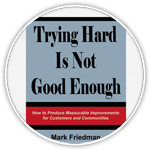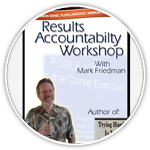I believe the case can be made that much if not most, philanthropy in this country and around the world is highly inefficient at creating the change we want. This inefficiency derives in part from the difference between “architectural change” and “organic change” processes. Architectural change is the “design and implement” model at the heart of most government programs and most grantmaking initiatives. Organic change is the “plant and grow” model we see in grassroots movements and self organizing systems. Architectural change is less efficient because it requires a constant infusion of new energy (money) to keep it going. Organic change is often self-generating and self-renewing.
We have plenty of examples of organic change processes, incentives perhaps being the most obvious. Incentivize certain behaviors (with money, recognition, etc.) and people naturally respond with the desired changed behavior. RBA is, at its heart, an organic process. Show people an indicator or performance measurement curve that’s not OK and watch them organize the partners and resources to turn the curve. Embedded in any good RBA practice is the idea of what works or theory of change. And embedded within theory of change is the idea of “theory of grantmaking,” that part of the theory of change discussion unique to those who have money to give away.
When I was at CSSP, I proposed some grantmaking ideas under the rubric of “Most Results for the Least Money.” These were inexpensive organic change ideas that you can link to here, as examples of the type of thing I am talking about. Foundations, United Ways and other funders should consider convening a Theory of Grantmaking advisory group to look at how you can get the most change (or best results) from the investment of funding and other resources. Such a group could examine the wide range of organic and other grantmaking strategies, examine the evidence for these approaches, and make recommendations on how to balance the grantmaking agenda to greatest effect.



